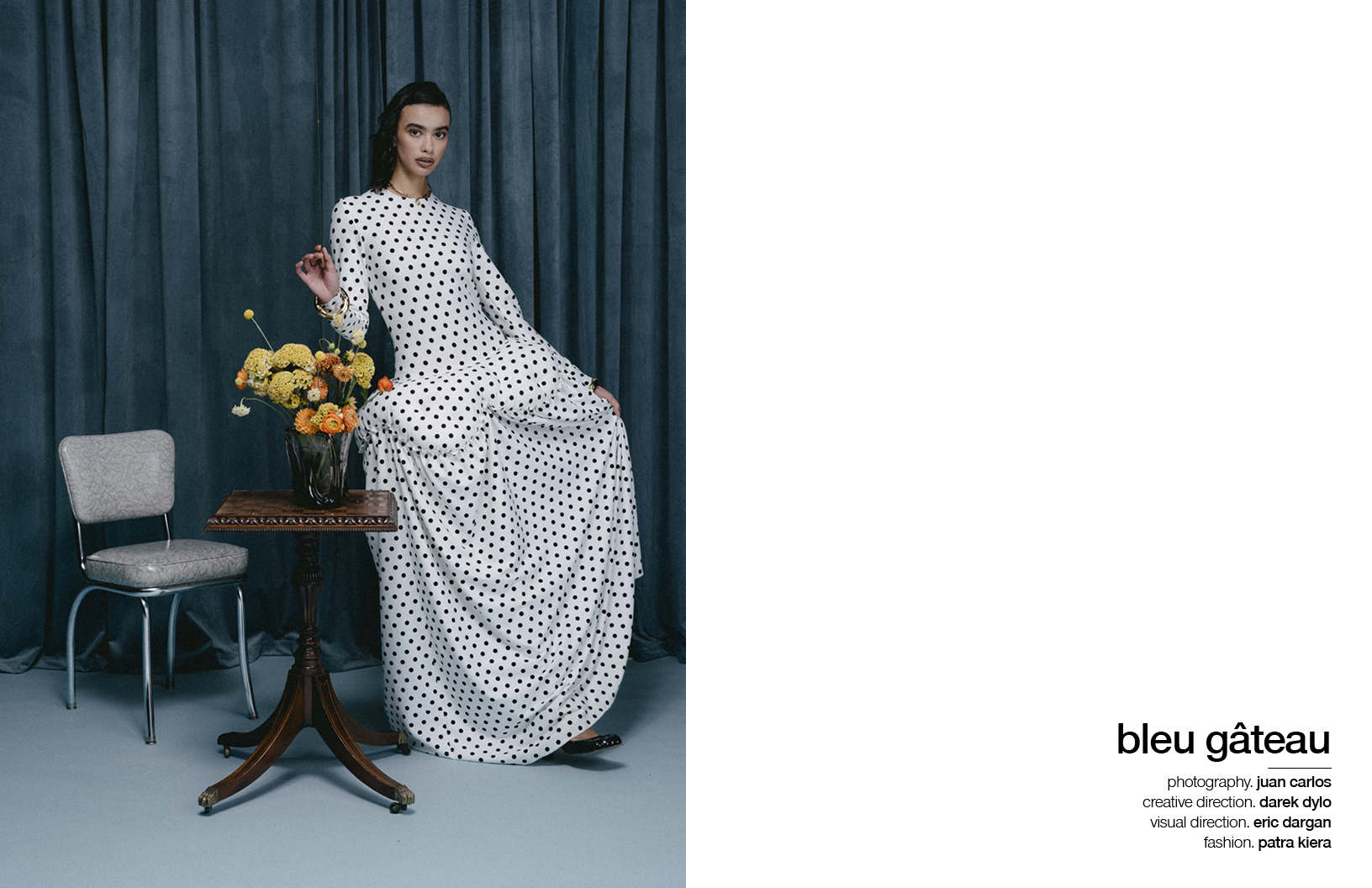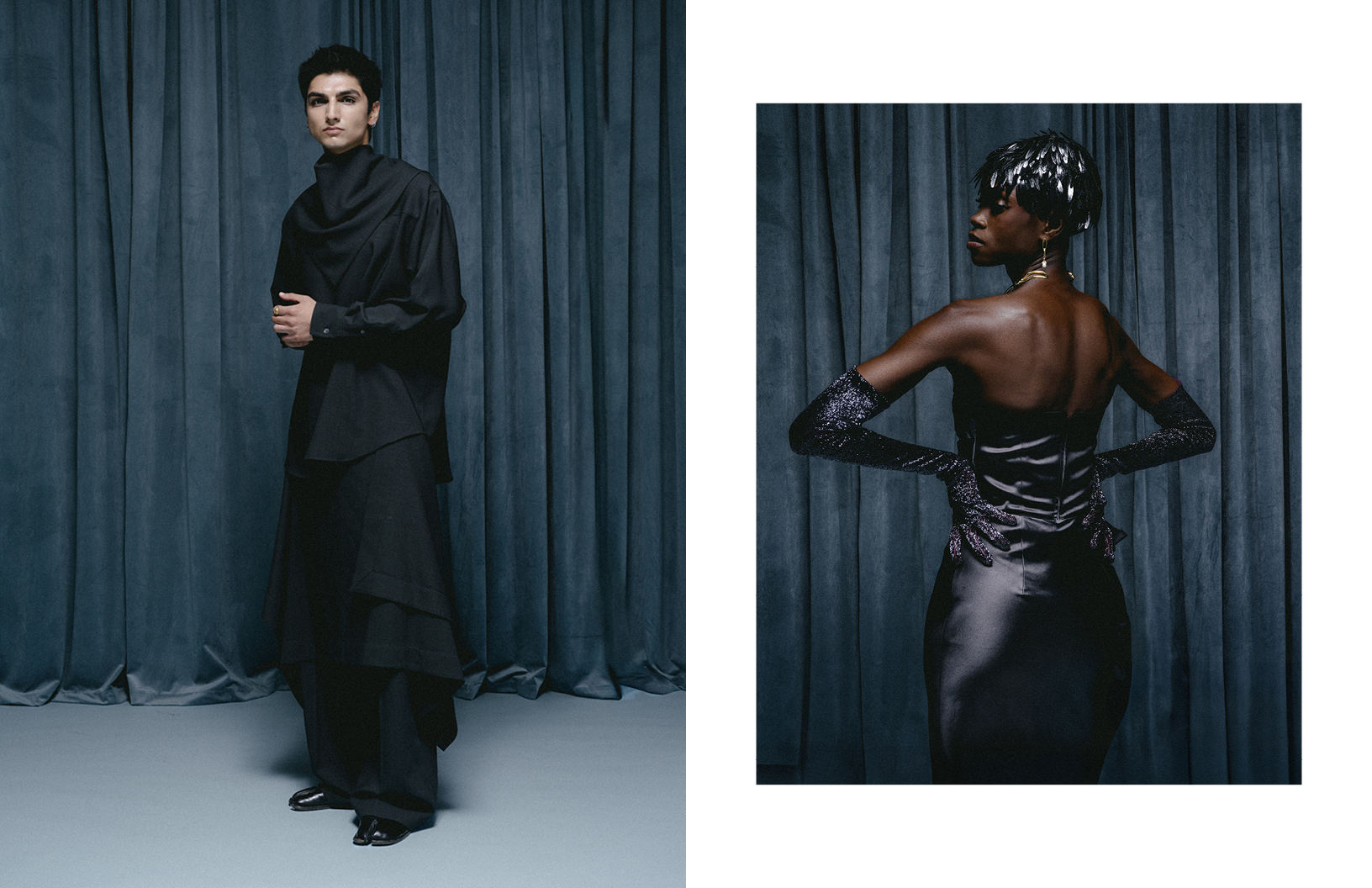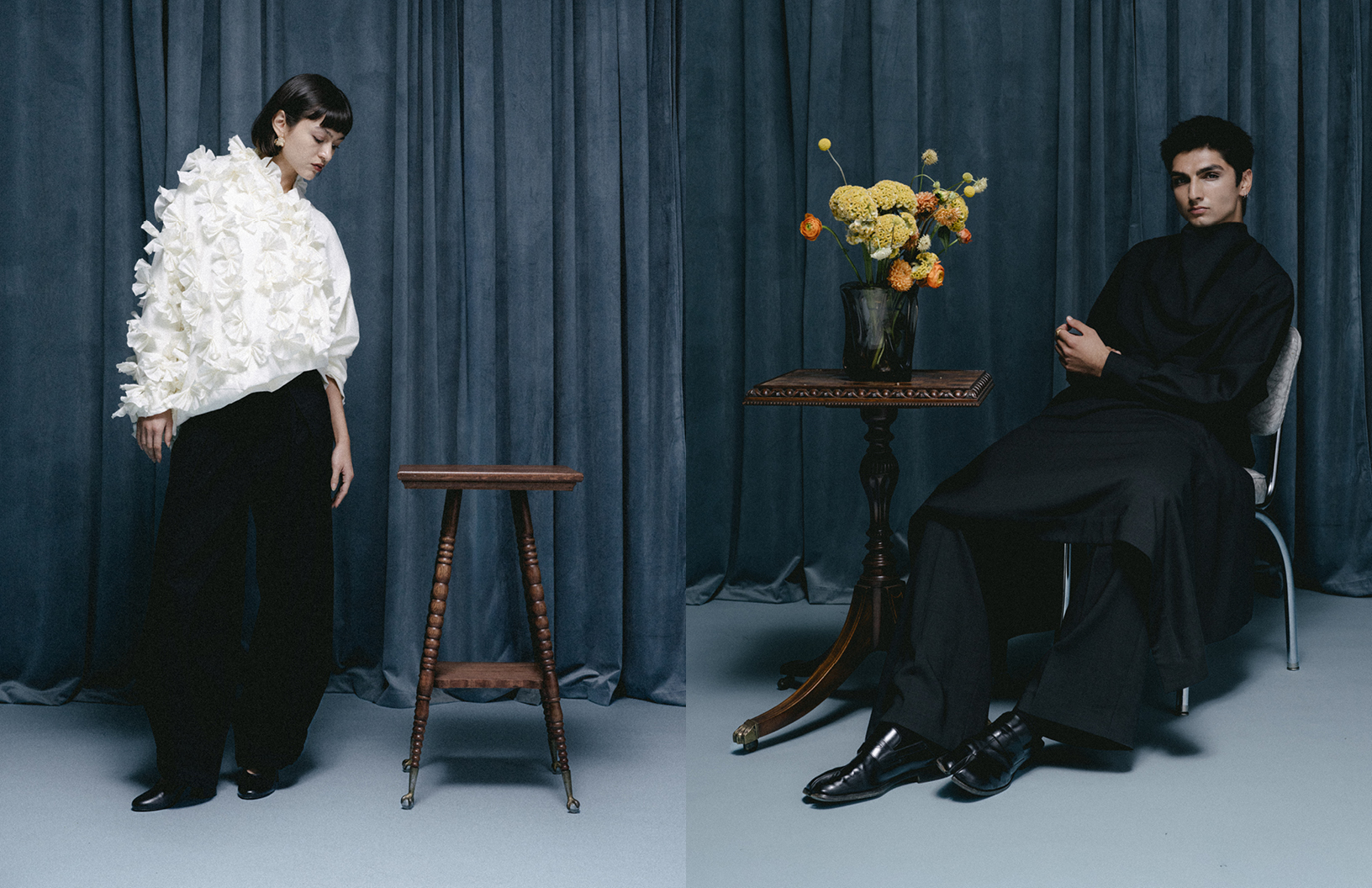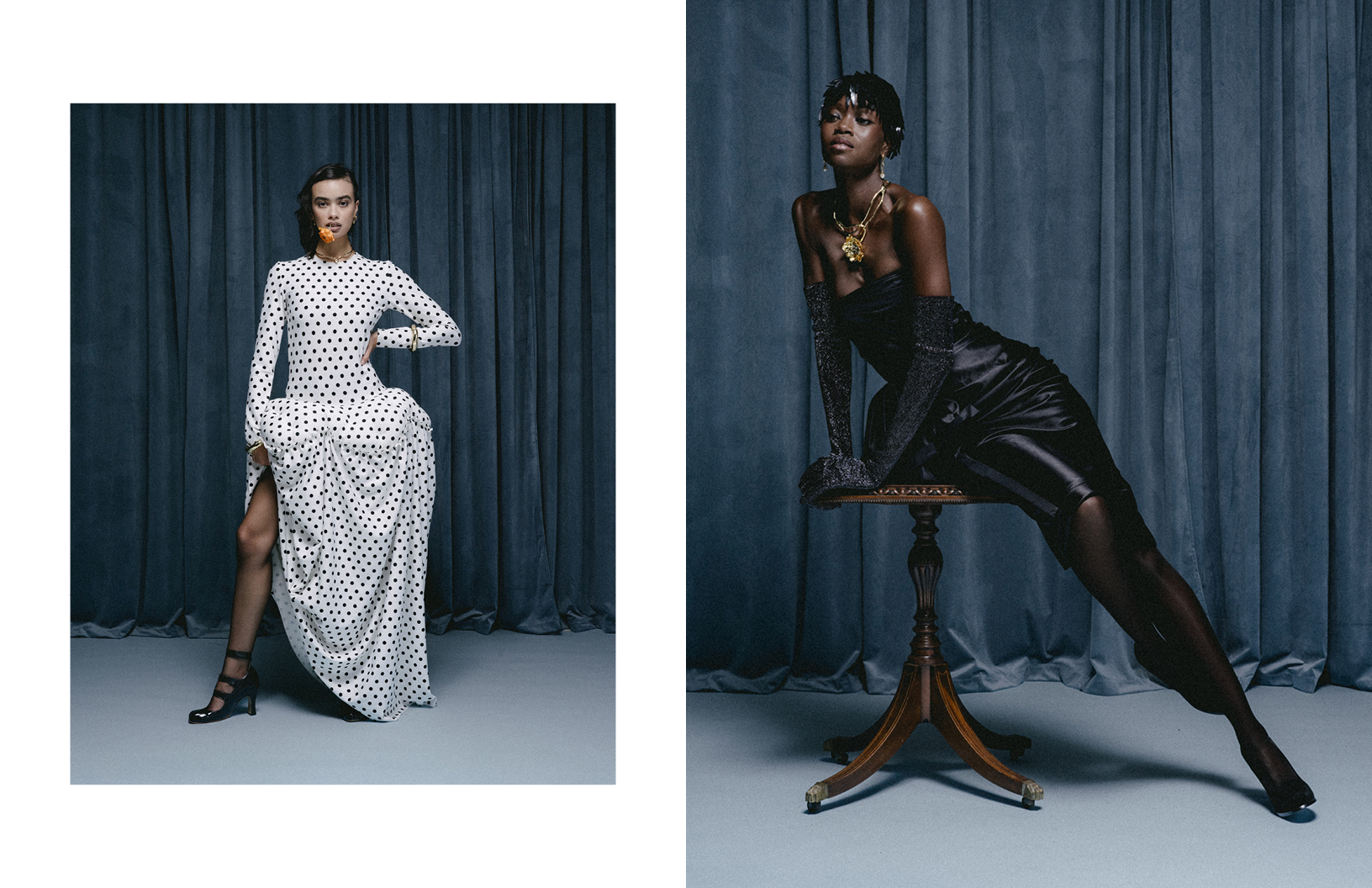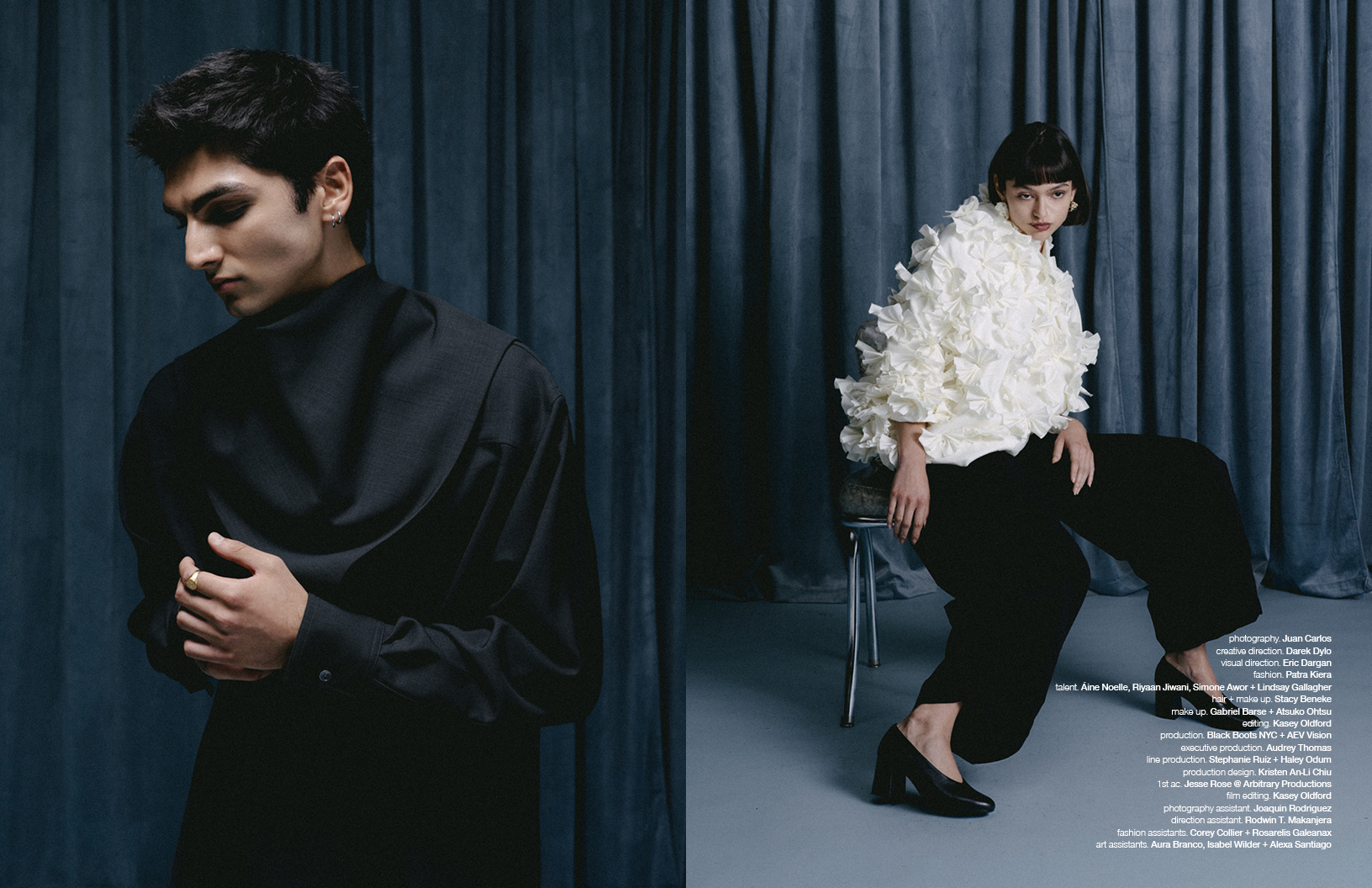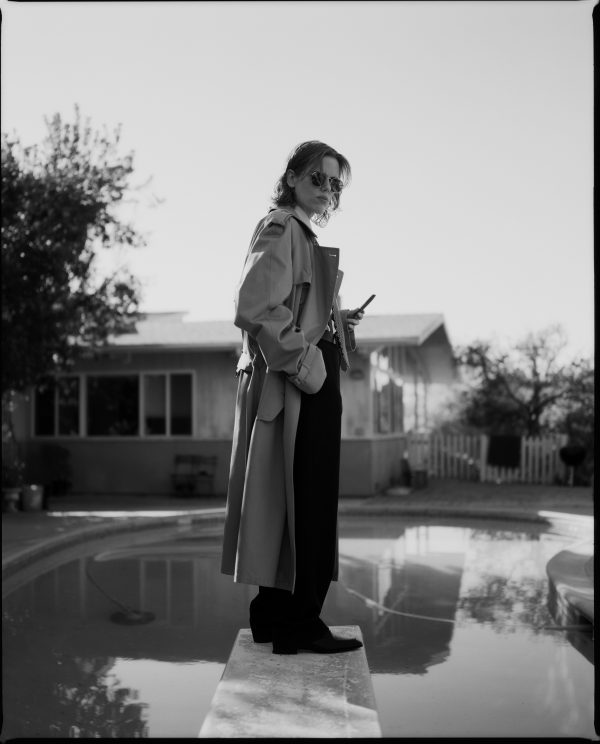
Jacquemus – Spring Summer 2018
The undeniable magic of Paris during Fashion Week is that there is so much going on, it is simply impossible to get to everything. If you’re part of a team, this means every person gets to do something. If you’re solo, it means you have to miss something. But, best of all, if you’re a freelancer who doesn’t get front row at Balenciaga, it means that there are probably four other things for you to go and see whilst the show is running. The amount of showrooms, new designers, accessories, appointments only jewels, and shop openings could keep an ordinary fashion lover happy for months. It is a fashion feast, even if sometimes it’s less caviar and more thin gruel. The designers who appeared the strongest this season were those who turned their back on trends, seasons and, ultimately, the world. Those who remained true to their creative vision and consolidated their position – whether they are well known and long established or newer and smaller names.
On one hand, Rick Owens and Haider Ackerman created collections with a strong look for the customer who adores what they do. A customer that understands the nuances each season and collects the clothes -rather than simply buying them. The consistency of their vision is unwavering, yet insiders recognize their clothes as in a secret language: they are not exactly outside fashion, but they are hardly household names. Rick Owens’ presentation and styling, as ever, made a forceful statement and, in its own way, so did Haider Ackerman’s. Fundamentally, they are designers not seemingly interested in reviews or fame but the making of the clothes for those who share their vision. Yohji Yamamoto, Jun Takahashi’s Undercover, Junya Watanabe and Comme des Garçons, to name but a few, work in the same way. Visionaries may surely be an overused word, but it truly applies to this group. Sebastien Meunier also takes on perfectly another house belonging to this group, Ann Demeulemeester, with clothes that develop the founder’s vision yet move the maison gently forward whilst offering the customer truly great clothes to add to their wardrobe. Maybe strangely, Dries Van Noten belongs in this group since his collections are uncompromising in his search for a specific type of beauty and romance involving textiles and embellishment. Picture a black jacket by any these powerhouses and you’ll notice there is a certain thread of line, quality, and beauty linking them: their strength and security in their creative pathways.

Beautiful People – Spring Summer 2018
Beautiful People designer Hidenori Kumakiri launched his label in Japan in 2007 and now shows in Paris, an undeniably brilliant talent formed as a pattern cutter at Comme des Garcons. This season’s show included the models dressed with intricate zipping, folding, and layering of the garments into the final looks. The collection seemed to combine influences in an assemblage of Victoriana and Japanese, origami and denim, and, above all, the power of the zip. Every outfit looked exquisite and ran the gamut from a cascade of shimmering glittering frills drifting to the floor through to very short quasi-sporty looks. incontestably, a total triumph and magical to watch.

Rochas – Spring Summer 2018
Rochas is designed by the wonderfully talented and experienced Alessandro dell’Aqua. This season was truly superb in an opulent baroque cocktail of shapes and fabrics featuring strong colours – from deep plum to chartreuse. The key element of modernness was the lightness of construction and fabric choice. The highlight was a trapeze dress in the Balenciaga-Yves Saint Laurent-esque mold yet lighter than air and featuring no heavy support as the model swung down the catwalk, the bubble backs providing a bounce and lightness to them. In general, a beautiful collection that offered beautiful clothes to the Rochas woman.

Cyclas – Spring Summer 2018
On the other hand, Cyclas showed beauteous clothes, in luxury quality fabrics, an intelligent colour palette and of first-class quality. Without a doubt establishing as a name to watch. Jacquemus also jumped forward in a collection that mixed Lartigue and New York in the 70’s, continuing his fascination with the heritage of fashion. He is oddly not a modernist but a “modern retroist” if that possible: a good collection, regardless of the label you hang on it.

Maison Rabih Kayroutz – Spring Summer 2018
Maison Rabih Kayrouz doesn’t really do ready-to-wear but the collection he showed during fashion week was so gorgeous, who cares? The collection featured a dress in shocking pink and white, which flared and soared from the tiny spaghetti straps to the floor, as well as a group of cool crisp summer white pieces decorated with hand stitched outlines of fish – a motif that also appeared in diamanté. The soft trapeze swing tips in crêpe and silk, as well as the dress with his signature linking with beads, created a new kind of openwork based around the age-old technique of drawn thread or entre jour. After all, the atelier is always full of clients as much as press, and this party atmosphere enhances the lovely clothes. The designer himself exudes a warmth and personality that links directly to his superb clothes. He is, indeed, a genius in his own quiet way.

Gauchère – Spring Summer 2018
Next, Gauchère showed a modern take on the “urban resort to beach” wardrobe, with clean clear lines and a versatile approach to layering. Undoubtedly, they are consistent in offering something with a twist on each piece without over-egging the pudding or resorting to tricks. Similarly, Aalto also upped their signature to create a strong collection, where models strode past looking relaxed, confident, and modern – all attributes to be much admired in contemporary fashion. Another label whose signature and strengths are increasing in confidence.

Masha Ma – Spring Summer 2018
Masha Ma took a gigantic leap forward to produce a really sensational collection which welded modern industrial sport/work wear with semi-couture pieces in a surprisingly total harmony. There was a subtle hint of Balenciaga in the silhouettes and great confidence exuded in the entire presentation.

Aalto – Spring Summer 2018
Anne Sofie Madsen loves beige as much as Chanel. However, her vision of beige can be a rippled and tucked off the shoulder top: a new take on the trench or a swinging fit and flare tunic dress with fringe. Against the huge beige pillars of the Palais Brongniart, the models rushed past in a strong collection of pieces which managed to remain true to the designer’s aesthetic whilst also moving the brand forward. From crisp clean and sharp to decorative and almost whimsical, this collection was a strong statement and bang-on target for the season.

Lutz – Spring Summer 2018
Lutz also leapt forward this season, into a dynamic and powerful statement of silhouette, colour, and fabrics. Presenting a new chic with a hint of couture whilst maintaining the strong signatures. The collection seemed up-tempo, for a successful working woman whose clothes empower her. A great collection featuring a vast variety of silhouettes, broad bands of lace, and a lightning flash of silver.

victoria/tomas – Spring Summer 2018
Manish Arora, on the other hand, shifted his colour palette and softened the styling this season, resulting in a really strong and romantic take on his signature. The collection was almost reminiscent of British in India, a kind of ladies of the Raj having tiffin in the hills theme. Genteel embroidered skirts, cardigans over their shoulders, a soft light infused the collection where beauty was enhanced by the soft flow of fabric and movement.

Leonard Paris – Spring Summer 2018
Doing a good job at an established house has become a poisoned chalice for many at Leonard Paris, but Christine Phung cleverly showed that going far from the house signatures is not a wise move, neither is honing too close to the originals. Her collection made much of the summer and resort clothes softer, more fluid and sexier. She brought a new ease to the pieces yet focused on the house prints whilst throwing great splashes of solid colour into the mix. There was a hint of Red Carpet as the entirely beaded prints appeared, flashed and sparkled under the lights, emphasizing the upbeat feeling of the show and the collection. The applause was no surprise.
Amongst the biggest names: Christian Dior was creative and feminist, Stella McCartney remains Stella McCartney, Céline was wearable and interesting, Chloé was pretty and romantic, Louis Vuitton was 18th century and sporty, whilst Balenciaga was creative and edgy. Yet, the brilliance of Balenciaga is that delivered in-store, the collection is so much stronger than on the catwalk, why? Since Demna Gvasalia and his team often base their ideas on simple twists, i.e. the mundane transformed, the pieces often need to be held in the hand up close to go: “I get it”. In a very weird way similar to Cristóbal Balenciaga’s ethos, the brilliance is often whispered, hidden or unfathomable.
As far as accessories go, Brian Atwood showed for the first time in Paris with his fittingly handsome presentation. Not only were the shoes divine -ranging from tiny flats with a pinned foldback in mouthwatering colours to cone heel disco diva rainbow shoes and pom-pom embellished Carmen Miranda inspired ones- but we got a disco cabaret for good measure. Bravo. Hugo Matta’s handbags featured the most beautiful presentation with French artisan cheese, flower, cake and even vegetables stalls, together with the exquisite handbags nestling amongst the cheese, macaroons, and leeks. In soft chalky pastels, crushed sugary surfaces, sharp black and white and cool Jolie Madame neutrals; the bags were good enough to eat, ranging from neat clutches to sportier double bags.

Brian Atwood – Spring Summer 2018
As with every year, the CFDA designers are a brilliant edit of nine designers offering the best in each category. This year the selection featured the sensational Morgan Lane, providing a spectacular array of sleepwear, pyjamas, lingerie, and swimwear. The pastel striped slipper satin pyjamas were reminiscent of Carole Lombard and the presentation in the art deco bathroom was a masterstroke, with a collection that fused New York nightlife glamour with the Paris aesthetic of modern art. The epitome of beautiful pieces to whip off the rail and wear. Brock Collection, on the other hand, presented a dress of faded striped and flowered linen, which fitted and flared into a Marie Antoinette shepherdess dress for 2018 would-be dauphines. In a marvelous balancing act, the whole collection was a pretty and romantic confection without once being cloying or over-sweet. Similarly, Newbark shoes focused on real classics infused with wonderful twists; a loafer in old bronze velvet, anyone?

Mazarine – Spring Summer 2018
Designer Apartments held three terrific and, again, contrasted collections. Victoria/Tomas‘ catwalk debut was a triumph, with great clothes, exquisitely styled and offered in a clean modern way. Even on the rail, every piece revealed how beautifully made they were, demonstrating the duo’s cleverness in sourcing, finish, detail, and fabric. Next designer, Mazarine had a first tiny show based around travel but at its heart focused on clothes with unparalleled quality thought and passion behind them. The amazing collectable pieces created from map printed vintage folded fabric alongside a perfect little jacket and a great pair of white linen pants heralds real talent for fashion. Kenta Matsushige also had beautifully made clothes, where simplicity spoke for luxury, clearly linking back to his cultural roots but also at modern architectural clothes. The garments develop from the simplest lighted layers to sculptural pieces created in a ribbed fabric almost like plaster and lined with the softest shirting, in its entirety simply fastened with the perfect rouleau tie.

Chanel – Spring Summer 2018
Finally, in a season of many hits alongside some monumental misses, Chanel was a resounding triumph. The setting of the wild landscape Gabrielle Chanel grew up in was extraordinary but it didn’t overpower the collection. Karl Lagerfeld managed to incorporate the theme and satisfy the house signatures, whilst clearly answering the needs of a massive global brand whose success is vitally rooted in accessories. Tiny glittering disco ball bags, huge logoed tote bags, soft tweed suits, long draped evening dresses, and even the most exquisite Chanel blouse with Lavaliere bows were all in evidence in the hundreds of models striding along the miles of catwalk. The girls appeared to love the clothes, energised by strong and sleek hair and make-up. The clear and sparkling plastic pieces did not once overpowered or diminish the collection, which truly offered something for all Chanel customers. The colour palette from start to finish encompassed brilliant blues through to the rainbow iridescence, seen in the light above waterfalls and the embroideries, beading, and fringes were like the filigree at the edge of surf or the droplets after a tropical rainstorm. Applause, please.
Words / Tony Glenville
Discover the latest issue of Schön!.
Now available in print, as an ebook, online and on any mobile device.




























































